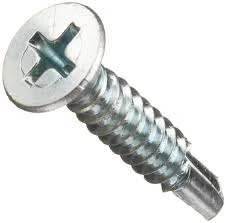Understanding the Role of Wafer-Head Metal Screws in Modern Engineering Applications
Understanding Wafer Head Metal Screws A Comprehensive Overview
In the realm of construction and manufacturing, the choice of fastening hardware is crucial. Among the various types of screws available, wafer head metal screws play a significant role due to their unique design and functionality. This article delves into the characteristics, applications, advantages, and some considerations regarding wafer head metal screws.
What are Wafer Head Metal Screws?
Wafer head metal screws are fasteners characterized by their flat, wide heads which provide a larger bearing surface. Unlike traditional screws, the wafer head offers a low-profile appearance, making them ideal for applications where aesthetic appeal and a flush finish are essential. The head's design allows for better load distribution and minimizes the risk of damage to sensitive materials.
These screws come in various materials, with metal—such as stainless steel or zinc-plated steel—being the most common. This choice of material contributes not only to the strength and durability of the screws but also affects their resistance to corrosion and wear, making them suitable for both indoor and outdoor applications.
Key Characteristics
1. Head Design The most distinguishing feature of wafer head metal screws is their head shape. The flat and broad head allows for easy installation and a tight fit against the surface of materials. This design reduces the risk of the screw pulling through softer substrates.
2. Threading The screws typically come with coarse or fine threading. Coarse threads are better suited for softer materials, providing a stronger grip, while fine threads are designed for harder materials, offering better precision.
3. Drive Type Wafer head screws can come with various drive types, including Phillips, slotted, or Torx. The choice of drive type affects how easily the screws can be installed and removed, which can be a crucial factor in some applications.
4. Length and Diameter Available in numerous sizes, these screws can be chosen according to the specific requirements of a project. The length and diameter of the screw must be compatible with the materials being fastened to ensure structural integrity.
Applications
Wafer head metal screws find use in diverse applications due to their versatile nature. Their low profile makes them particularly suitable for
- Electronics In the assembly of electronic devices, where space is limited, and aesthetics matter, wafer head screws provide a neat finish.
- Furniture Manufacturing They are commonly used in the assembly of cabinetry and furniture, allowing for a strong hold without protruding excessively.
wafer head metal screws

- Automotive Industry In automotive applications, these screws secure various components, benefiting from the strength and vibration resistance they offer.
- Construction For construction projects involving drywall or light gauge metal, wafer head screws provide the necessary holding power with a clean finish
.Advantages
1. Aesthetic Appeal The flat head design offers a clean, finished look, making them ideal for projects where appearance matters.
2. Enhanced Load Distribution The broader head design aids in distributing the load over a larger surface area, reducing stress on the material being fastened.
3. Easy Installation With various drive types available, these screws can be installed quickly and easily, particularly in applications requiring frequent adjustments or disassembly.
4. Material Variety Available in different metals and coatings, wafer head screws can be selected based on resistance to environmental factors, which is crucial for longevity.
Considerations
While wafer head metal screws offer numerous benefits, there are a few considerations to keep in mind
- Material Compatibility It's essential to choose the appropriate screw material to prevent issues like galvanic corrosion, especially when joining dissimilar metals.
- Load Requirements Ensure the chosen screw can handle the required load for the specific application. Inadequate screw length or diameter may lead to a failure in fastening.
- Screw Over-tightening Given the flat head design, there's a risk of over-tightening, which can damage softer materials or strip the screw hole.
Conclusion
In conclusion, wafer head metal screws represent a versatile and aesthetically pleasing fastening solution for a wide range of applications. Understanding their characteristics and appropriate uses can significantly enhance the effectiveness and durability of any project. As with any fastener, careful consideration in selection and installation will yield the best results, ensuring that structures and components remain secure for years to come.
-
Weatherproof Plastic Expansion Anchors for OutdoorNewsJun.06,2025
-
Sustainability in the Supply Chain: Eco-Friendly TEK Screws ProductionNewsJun.06,2025
-
Load-Bearing Capacity of External Insulation FixingsNewsJun.06,2025
-
Double Head Bolts: Enhancing Efficiency in Industrial MachineryNewsJun.06,2025
-
Corrosion Resistance in Chipboard Screws: Coatings for Wholesale DurabilityNewsJun.06,2025
-
Butterfly Toggle Bolts : Enhancing Structural ResilienceNewsJun.06,2025
